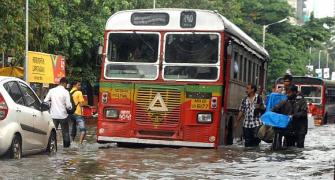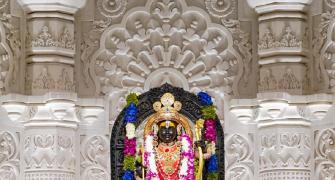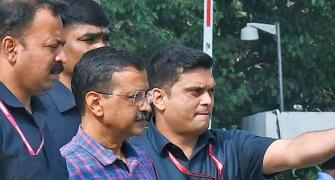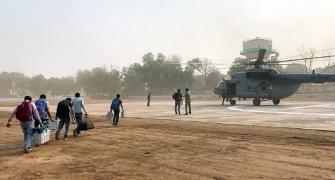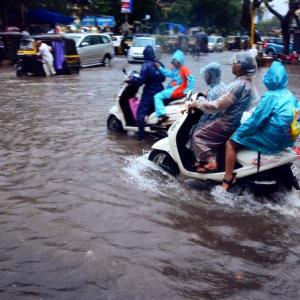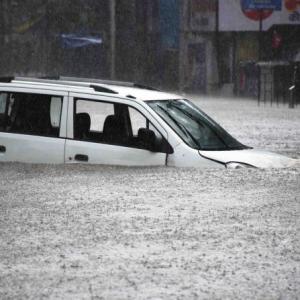Air India engineers braved incessant rains to pull out the 41-tonne aircraft which caused one of the biggest disruptions on the main runway since August 2011. Arindam Majumder reports.
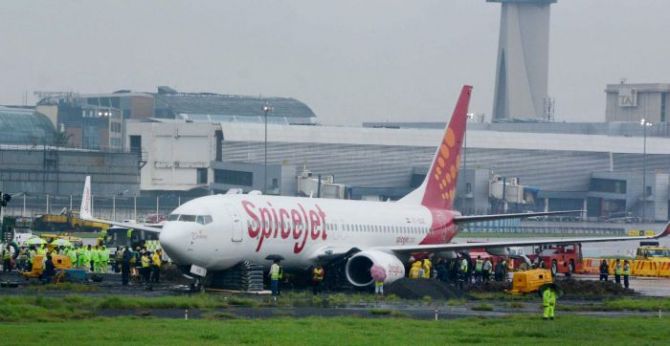
Photograph: PTI Photo
More than 90 people worked constantly for 24 hours in incessant rain to pull out the SpiceJet aircraft, weighing 41 tonnes, that kept the primary runway of the Mumbai airport shut and disrupted operations at the country’s second busiest airport.
"The advantage was that our aircraft recovery kit is based in Mumbai, so our men were on the ground quickly," said H R Jagannath, chief executive of Air India Engineering Services, which carried out the operation.
It was not a new incident for the team, as AIESL has undertaken similar operations, including retrieving a Turkish Airlines A-330, which kept the Kathmandu Airport shut for more than 48 hours.
"Air India is the custodian for the Indian subcontinent, Southeast Asia and a small section of the Gulf for the International Airlines Technical Pool, known as IATP. Member airlines pay us for carrying out such operations," Jagannath said.
IATP is a convention of airlines started 59 years ago to promote safety in the skies. It is a not-for-profit, independent and non-political global organisation.
Among the 101 international airlines members that pay a premium to IATP are Jet Airways, Lufthansa, British Airways, Virgin Atlantic and, of course, Air India.
But the Mumbai rain made the retrieval difficult. Before work could start on the site, it had to be ensured that the condition of the ground was such that it would be able to withstand the weight of the aircraft.
"In Mumbai, incessant rain made the job more challenging as it was making the ground soft. We had to ensure the ground was levelled using gravel, stones and sand," he said.
This was simultaneously being carried out along with developing the recovery plan.
An aircraft recovery plan is developed based on local conditions, along with discussions with the airport operator and the airline.
An airport operator will want the aircraft to be removed as soon as possible to normalise operations but the airline's concern will be to minimise damage to the aircraft.
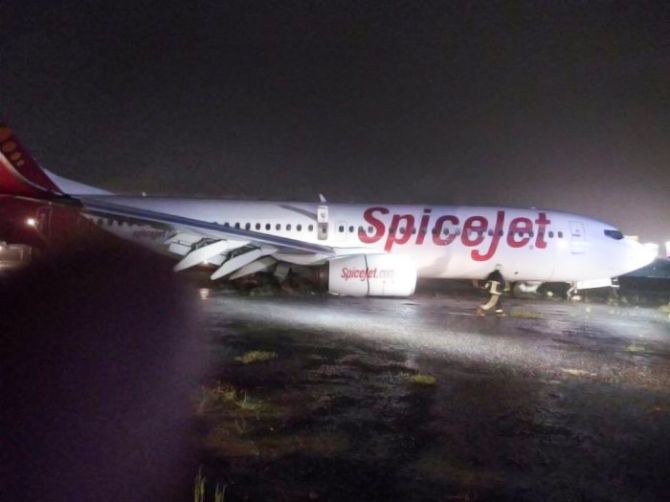
Photograph: ANI
Airports like Mumbai, which operate with a single runway, are faced with the difficult challenge of obtaining equipment via ground transportation, which significantly delays the receipt of the critically needed gear and causes longer runway closure times.
"We had to ensure that the aircraft was retrieved fast, quickly but with as little damage as possible. We gained rapid access to the site along with the recovery kit," Jagannath said.
The equipment weighs about seven tonnes and consists of inflated airbags.
The airbags help in raising the aircraft from the ground, making it possible to check the landing gear to find out the extent of damage.
Jagannath explained that it normally took about 30 minutes to inflate each bag and all bags needed to be inflated simultaneously to be put into the designated areas of the aircraft.
"This is the most crucial part as there are four or five points where the airbags can be put, it has to be done with proper care and takes time," he said.
More than 24 hours after it skidded off the runway, the aircraft was pulled out and towed away to the hangar.
"These are unforeseen situations, I am glad that we could do the job in as little time," he said.
This was one of the biggest disruptions on the main runway at Mumbai airport since August 2011, when it took three days to remove a Turkish Airlines' A340 aircraft from the runway.


